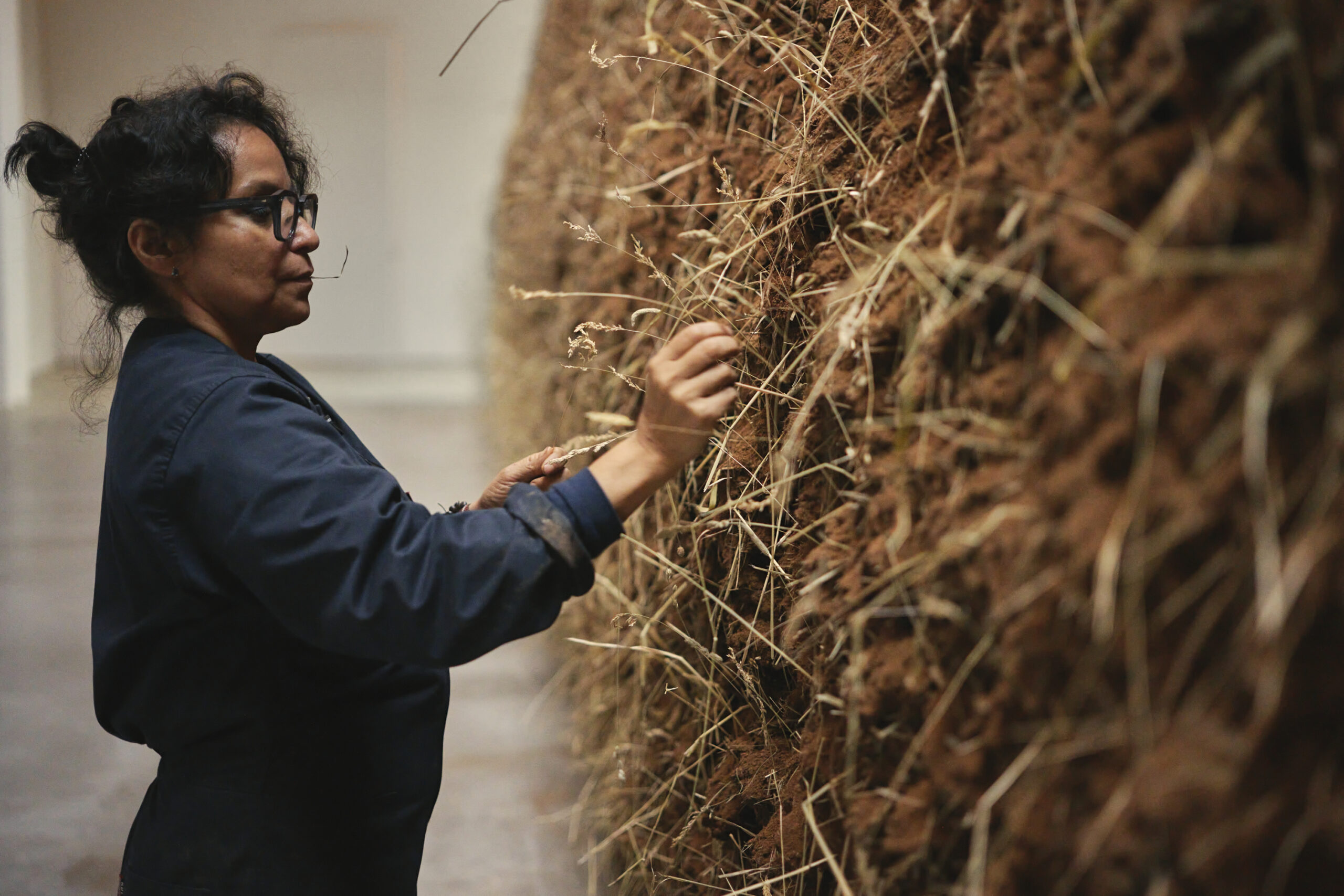Founded in 2013 by Bridgitt Evans, a private equity professional and collector from Boston, VIA Art Fund has made a significant impact as it approaches its 10th anniversary. Since its inception, it has awarded twenty-two grants totaling $8.4 million for various artistic projects, such as incubators, public art installations, educational programs and symposia worldwide, with a specific emphasis on the New York-Los Angeles axis.
A primarily women-owned and operated organization, VIA has sponsored some of the most ambitious artistic productions of recent decades while consistently surpassing its fundraising goals each year. It has, for instance, funded multiple U.S. pavilions at the Venice Biennale, and currently, the fund is backing major projects by notable artists such as Kara Walker and Cannupa Hanska Luger in Los Angeles and Nicole Eisenman in New York City.
VIA has also supported recent significant works by artists like Simone Leigh, Rose B. Simpson, Josh Kline, Glenn Ligon, Sarah Sze, Isaac Julien and Yinka Shonibare. Notably, VIA was instrumental in bringing to life “El Embrazo,” a monumental-scale installation by Colombian artist Delcy Morelos at the Dia Foundation.

Upon the unveiling of some new VIA-supported projects this fall, Observer spoke with art advisor Molly Epstein, a pivotal figure in shaping the organization’s development. She shared insights into the significance of supporting artistic production, the organization’s sustainability strategies and future objectives.
“Our goal is to support ambitious projects by both new and established voices,” she said. “To date, we have supported 147 projects, with fifty-two of those now having permanent homes in museums and institutions, which is the other important thing we try to do with our organization.”

Over the years, VIA Art Fund has cultivated an extensive network of artists it has founded, museums and curators, effectively creating a connective tissue that brings more ambitious projects to a wider audience and secures their future presence in the world. To further enrich this network, the fund introduced a curatorial fellowship in 2017, viewed as a natural progression of its grant-making efforts. It was clear, according to Epstein, that to make a real impact on the field, the organization needed to provide support not only to artists but also to scholars and exhibition makers in the curatorial field.
“The grants provide funding, which they can use for travel and research,” she said. “We’re honored that the eight VIA curatorial fellows to date, from Naomi Beckwith to Jessica Bell Brown, have become a part of the extended VIA family, together with a cohort of artists and in the traditions that we supported over the years.”
Assigning the funds involves a rigorous grant assignment process that includes extensive research, studio visits and numerous discussions with curators and art world professionals to pinpoint the right projects. “It’s a very horizontal organization. We meet twice a year with our partners, we listen to the different projects that artists and curators bring to the table, and then we vote,” Epstein said. VIA has two grant cycles annually, leading to support for four to six projects during each round. In the future, VIA hopes to grow its donor base to support a wider breadth and range of projects.
Among the projects funded in the latest grantmaking round is an ambitious multimedia installation by Mandan, Hidatsa, Arikara and Lakota artist Cannupa Hanska Luger, titled Sovereign, recently installed in the Hammer Museum’s atrium. This installation is a major part of the exhibition “Breath(e): Toward Climate and Social Justice,” coinciding with the citywide initiative PST ART by Getty with arts institutions across Southern California. Appropriating and redirecting Hollywood narrative to stage a sci-fi speculation, Luger’s work imagines a series of Indigenous figures traversing the space-time continuum in a future where civilization has collapsed, yet humans preserve knowledge and culture through Indigenous technologies and perspectives, offering alternative solutions to environmental and societal issues. As usual in Hanska-Luger’s practice, native thinking is seen and encouraged as an alternative approach to a more sustainable relationship with our environment.
Another notable project is Fixed Crane by Nicole Eisenman, set to transform Madison Square Park this October to mark the 20th anniversary of its “Public Art, Public Space” initiative. This monumental public intervention repurposes a decommissioned crane from the late 1960s, challenging traditional notions of monumentality and functionality.

Given the scope and scale of its projects, a pressing question for VIA Art Fund is how it maintains financial sustainability. According to Epstein, the extensive network developed over the years plays a crucial role. “As we get to our anniversary, we’re excited for this next phase as we continue to bring in more partners and supporters,” she said. “Even for the ones who are already patrons in other organizations, we offer something quite singular as they really get to participate in all the grant-making and assignment processes.”
The feedback from artists is overwhelmingly positive. “Receiving a grant acts as a catalyst for evolution and new momentum in their practice and their careers, also thanks to the network we provide and expose them to.”
VIA recently commissioned the co-creators of The Burns Halperin Report, Charlotte Burns and former Observer writer Julia Halperin, to conduct a survey. The findings offer fascinating insights into the demographic backgrounds of the artists supported, demonstrating that VIA has achieved near gender parity in its awards, with grantees being 56 percent male, 41 percent female and 3 percent non-binary or gender fluid. Moreover, the report highlights VIA’s significant support for artists of color, particularly women of color, with 38 percent being African American or Black and 36 percent white. Additional demographic data shows 5 percent Native American artists, 10 percent Hispanic artists and Latinx and 12 percent Asian artists.
